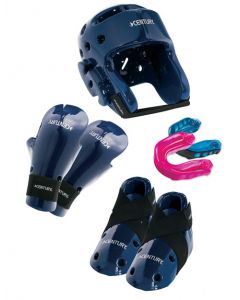A Craft of Selection: Picking the Appropriate Martial Supplies
Picking the right martial arts equipment is crucial for both beginners and veteran practitioners. The suitable gear can enhance your training experience, elevate performance, and help reduce injuries. With numerous options to choose from, navigating the realm of martial arts gear can appear overwhelming. From attire and protective gear to training tools and accessories, every piece of equipment plays a critical role in your martial arts journey.
Identifying your specific needs and goals is important to making wise decisions about your gear. Whether you are training in karate, selecting the right equipment can significantly influence your competence and enjoyment. In this article, we will discuss essential factors to consider when picking martial arts equipment, making sure that you discover the best fit for your practice and personal style.
Essential Gear for Beginners
Picking the right martial arts gear is essential for beginners as it helps to ensure safety and ease during training. The initial essential item for newcomers starting their martial arts path is a quality uniform, typically called a gi for styles like karate and judo, or a dobok for taekwondo. It is vital to select a uniform that is appropriate in size, allowing for freedom of movement while also being long-lasting enough to withstand rigorous training sessions. Proper sizing is crucial, so consult sizing charts and consider the material that feels comfortable against the skin.
Subsequently on the list is protective gear, which cannot be ignored. This includes items such as mouth protectors, hand wraps, and shin guards. For topstar-sports.com , using a mouthguard is essential to protect teeth during sparring or competitions. Hand wraps help to protect the wrists and knuckles when executing striking techniques, while shin guards provide safeguarding against impacts during kicks. Putting money into quality protective gear can greatly enhance training experiences and reduce the risk of injury.
In conclusion, beginners should also consider training aids that enhance skill development. Essential items like focus pads and heavy bags can be used to practice striking techniques efficiently. These tools allow practitioners to enhance their striking accuracy and power. When selecting training equipment, ensure it is suited for your specific martial arts style and level of experience, as this will help in optimizing your training sessions.

Selecting the Right Footwear
Selecting the suitable footwear for martial arts is important for both effectiveness and safety. Depending on the martial art, the demands for footwear can differ significantly. For example, arts that are practiced on mats such as Brazilian jiu-jitsu or judo usually require training barefoot, while kick-based arts like taekwondo or kickboxing may require specific shoes designed to offer both grip and support. Recognizing the requirements of your selected martial art will help you in making an educated decision.
When assessing martial arts shoes, focus on fit and size. Shoes should provide ample cushioning for foot and ankle movements, especially during dynamic movements and footwork drills. Look for characteristics such as breathable materials to maintain your feet dry and comfortable, low-weight construction to improve agility, and a flexible sole that allows natural foot motion. Steer clear of bulky shoes that could hinder your movement or create discomfort over time.
Lastly, consider the surface on which you will be training. Some martial arts environments, such as dojos and gym floors, require shoes with specific traction to prevent slipping. If you're training outdoors or on varying surfaces, choose shoes with durable soles that can withstand rough conditions. Always try on shoes before buying to ensure they match your training needs and provide you with the support needed for practice.
Care and Care Tips
Caring for your martial arts gear is important for prolonging its durability and ensuring optimal efficiency. Routine cleaning should be a part of your practices, especially for pieces like kits, gloves, and pads that can collect sweat and grime. Comply with the manufacturer's recommendations for washing and drying your gear, and think about using a soft detergent to prevent harming the textile. For protective gear, such as shin guards and teeth guards, rinse them thoroughly after every session to get rid of germs and smell.
Inspecting your gear regularly can assist identify any deterioration that needs care. Look for clues of wear, such as torn seams on your outfit or flaws in your mouthguard. Tackling these issues swiftly can prevent further decline and keep you protected during practice and contests. If gear is irreparable, it may be time to swap out it to maintain your safety and effectiveness.
In conclusion, keeping your martial arts gear correctly is vital. Keep gear in a cool, dry place away from sunlight to prevent color loss and wear. Use a designated bag to transport your gear to and from workouts, and give your gear some opportunity to breathe after training before putting it away. This routine not only helps maintain your tools but also keeps your training space tidy.